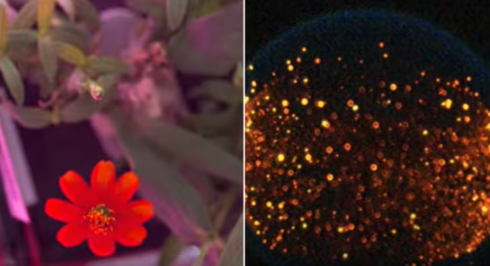The Hubble constant—a measure of the universe’s expansion rate—has shown a notable mismatch in recent James Webb Space Telescope (JWST) data. This disparity has prompted a heated discussion among scientists and poses a danger to the stability of the accepted model of cosmology. Dark energy is the unseen force responsible for galaxies speeding apart, and it has been suggested that this force is what caused the universe to expand from the Big Bang onward.
However, the nature of dark energy and how it interacts with matter is still unknown. Moreover, inconsistent data from astrophysicists employing various techniques to gauge the universe’s expansion raises questions about the precision of the existing model. This disparity raises the possibility that our knowledge of the universe is incomplete. Scientists are attempting to resolve these differences and determine the actual cause of the universe’s expansion as this dispute rages on.
The universe was a roiling plasma of matter and antimatter particles in the early phases, right after the Big Bang. Scientists think that the universe was spared self-destruction because of an unidentified imbalance that caused more matter than antimatter to be created. Sound waves rippled across the plasma’s surface as a result of gravity’s compression of it. Galaxies were formed as regular matter clumped together during the universe’s expansion and were interconnected by a cosmic network of dark matter.
The current model of cosmology called Lambda cold dark matter (Lambda-CDM), describes how the universe has expanded overall while accounting for the contributions of dark matter, dark energy, ordinary matter, and light energy. However, the precise nature of dark energy and dark matter is still unknown. Although it is generally accepted among scientists that the cosmos is made up of 75% dark energy and 5% conventional matter, the remaining 25% is thought to be made up of dark matter.
One of the main points of disagreement nowadays is the Hubble tension, which gauges how quickly the universe is expanding. Astrophysicists have employed a variety of techniques, and the results have been inconsistent. Some have suggested that the early universe expanded more quickly than Lambda-CDM had projected. Because of this disparity, experts are now questioning the validity of the existing paradigm and looking for other answers.
The issue has gained additional momentum because of the exact observations made by the James Webb Space Telescope. The gap in the Hubble constant has been confirmed by the JWST’s recent observations, which have stoked conjecture that new physics is required to explain the universe’s faster expansion.
To resolve the differences and create a more complete model that more properly depicts the expanding universe, scientists are striving to go higher on the cosmic understanding ladder by investigating the nature of dark matter and dark energy. Although the mysteries of the cosmos remain unsolved, these scientists’ efforts have brought us one step closer to discovering the answers to our vast and intricate world.
Ascending the cosmic ladder
More is needed to measure the expansion of the cosmos than just a radar gun. Utilizing the so-called cosmic microwave background (CMB), a remnant of the first light emitted in the universe 380,000 years after the Big Bang, is the first technique to estimate this growth. The entire sky has the imprint, which was mapped between 2009 and 2013 by the European Space Agency’s (ESA) Planck satellite to determine a Hubble constant with an uncertainty of less than 1%.
The universe appears nearly homogeneous in this cosmic “baby picture,” but regions of higher and lower temperatures where matter is rather dense indicate the locations where baryon acoustic oscillations caused it to clump. This soap-bubble structure expanded into the cosmic web, a network of crisscrossing strands along whose crossings galaxies would be born, as the cosmos burst forth.
























